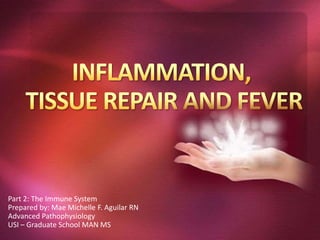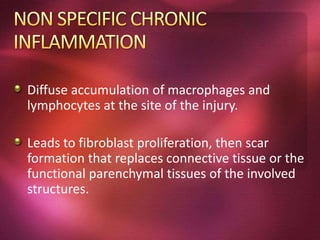The document provides an overview of the immune system and inflammation. It discusses the inflammatory response process, including the vascular and cellular stages. It describes the signs of inflammation (rubor, tumor, calor, dolor, functio laesa) and cells involved in inflammation like neutrophils, eosinophils, basophils, and monocytes. It also discusses mediators of inflammation like kinins, complement system, histamine, serotonin, arachidonic acid metabolites, platelet activating factor, cytokines, and nitric oxide. Finally, it covers acute phase response, types of inflammation (acute vs chronic), and factors that influence wound healing.









































































